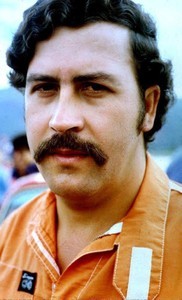13654122
Chapter 1 - Atomic structure and Periodic table
Description
No tags specified
Mind Map by Ali-a's Adopted Brother, updated more than 1 year ago
More
Less

|
Created by Ali-a's Adopted Brother
over 7 years ago
|
|
Resource summary
Chapter 1 - Atomic
structure and
Periodic table
- All elements
can be found
inside the
periodic
table.
- An element is a substance
that cannot be brokn down.
- An element is a substance
that cannot be brokn down.
- Compounds are a
substance that
contains 2 or
more different
types of atoms.
- Magnesium + Chlorine
---> Magnesium Chloride
- Magnesium + Chlorine
---> Magnesium Chloride
- ...ate means oxygen is
involved in the reaction
- Electricity can
break
compounds
apart
- MgO(2) is a formulae
- Mg is in group 2
- Oxygen is diatomic - O(2)
- It is in group 6
- It is in group 6
- Oxygen is diatomic - O(2)
- This adds up to 8 and it has a
full outer shell. It is Happy :)
- Mg is in group 2
- If 2 or more elements join be sharing
electrons , it is a molecule
- Mixtures are more than one type of atom not
chemically joined. This means they can easily
be separated from eachother
- Filtration - This technique separates a insoluble
liquid from a solid. One beaker contains solid and
liquid , the other is filter paper.The mixtueres are
both poure din and the solid will be left behind, the
solid will not.
- Crystallisation can be used to
separate a solid dissolved in
liquid.
- Distillation is separating out liquids with different boiling points
- Chromatograpghy is separating out the different
coloured inks.
- Theories of the atom
- 1. 400 BC, Democritus suggested the
atom was a group of small
particles that could not be
divided.
- 2. John Dalton, 200years after suggested the
atom was a "billiard ball" that could not be
divided
- 3.1897 ,JJ. Thompson discovered the
electron and said the electrons were
embedded in a ball of positive
charge, like a Plum Pudding.
- 4. 1909 Geiger and Marsden found interesting results and with Ernest Rutherford, they discovered
that the atom had a nucleus and Rutherford said that it has a positive charge in the
centre where the mass is concentrated and much was empty space . This is the nuclear model
- 5. 1913, Niels bohr used
- 5. 1913, Niels bohr used
- 4. 1909 Geiger and Marsden found interesting results and with Ernest Rutherford, they discovered
that the atom had a nucleus and Rutherford said that it has a positive charge in the
centre where the mass is concentrated and much was empty space . This is the nuclear model
- 3.1897 ,JJ. Thompson discovered the
electron and said the electrons were
embedded in a ball of positive
charge, like a Plum Pudding.
- 2. John Dalton, 200years after suggested the
atom was a "billiard ball" that could not be
divided
- 1. 400 BC, Democritus suggested the
atom was a group of small
particles that could not be
divided.
- Elecron has a negative charge,
Proton has a positive charge and
Neutron hasn't got a charge.
- Relative Atomic mass mass can be found by : (Mass of first
Isotope x %of first Isotope) x (mass of 2nd Isotope x % of second
Isotope)
Media attachments
Want to create your own Mind Maps for free with GoConqr? Learn more.
